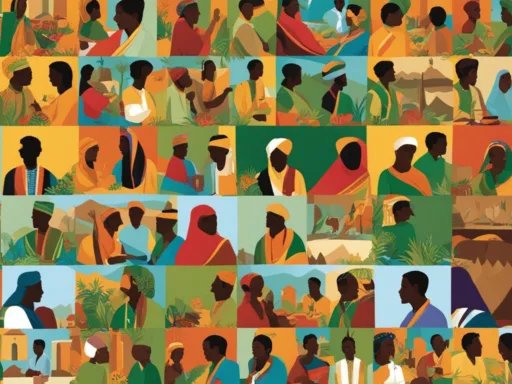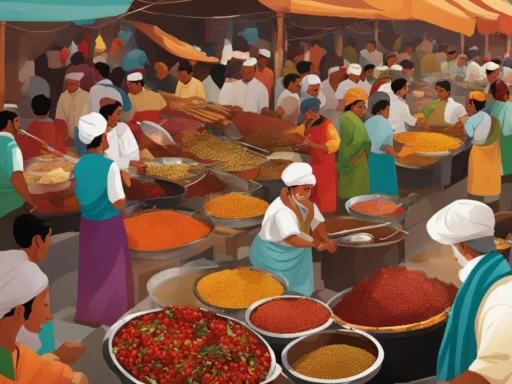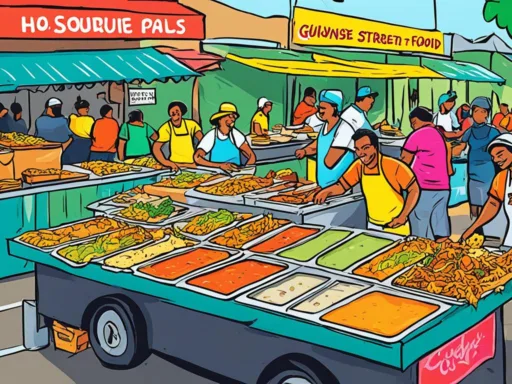Did you know that in Dominica, there are over a thousand varieties of plants edible to humans? Imagine the sheer diversity of Dominican cuisine, deeply intertwined with this bountiful nature. Embarking on a Dominican Cuisine Journey is akin to exploring a verdant edible paradise, rich with fruits, vegetables, and spices that form the backbone of Dominica’s Diverse Dishes. The Caribbean Culinary Explorations on this island lead to a precious discovery of the Rich Culinary Heritage of Dominica, from the briny sweetness of its abundant seafood to the heartwarming complexity of its Creole flavors.
To truly appreciate the treasures of Dominican gastronomy, one must dive into the island’s practices of sustainable harvesting, locally rooted traditions, and a communal approach to meal preparation. Flavor here is more than taste; it’s a vivid narration of heritage and culture, a kind of island alchemy that combines the natural with the nurtured, and presents an irresistible invitation to food enthusiasts and culture vultures alike.
Key Takeaways
- Discover the unique biodiversity that contributes to Dominica’s Diverse Dishes.
- Embrace the vibrant taste sensation offered by a Dominican Cuisine Journey.
- Appreciate the harmonious blend of traditional practices and natural bounty in the Rich Culinary Heritage of Dominica.
- Experience the joyful celebration of flavors through Caribbean Culinary Explorations in Dominica.
- Gain insight into the role of Dominica’s lush environment in shaping its exceptional culinary profile.
The Importance of Seafood in Dominica’s Cuisine
Situated at the heart of the Lesser Antilles, the Island of Dominica is renowned not only for its striking natural beauty but also for a culinary culture that is rich in maritime traditions. Often referred to as the “Nature Island,” Dominica’s dishes tell the story of an enduring connection to the ocean, where the bounty of the sea provides a daily feast for its people. The significance of seafood in Dominica’s culinary repertoire cannot be overstated; it is imbued with the essence of the Caribbean culinary experience and is a testament to Dominica’s fishing heritage. Through the flavors of fresh caught fish and crustaceans, each plate offers a taste of the island’s soul.
Freshness from the Caribbean Sea
Dominica’s proximity to the bountiful Caribbean Sea ensures that fresh seafood is a staple in the diets of its inhabitants. The tradition of venturing into the crystalline waters to catch fish is a ritualistic dance with nature, and the outcome is a parade of sublime seafood that graces the tables of locals and visitors alike. Among the prized catch is the **grilled lobster**, celebrated for its succulent flesh and often considered the jewel of the island’s seafood fare. With each bite of these delicacies, you partake in a centuries-old legacy that continues to flourish.
A Culinary Reflection of Heritage
The reverence for seafood in Dominica goes beyond mere sustenance; it is woven into the very fabric of the island’s history. Dishes like the flavorful fish stew are not just a meal but also a cultural ritual that honors the island’s rich heritage. The blend of freshly caught fish, local herbs, and spices creates a heartwarming potpourri of tastes, exuding comfort and nostalgia. This is the quintessence of a Caribbean culinary experience—one that is shaped by the hands of history and served with pride.
Traditional Seafood Preparation Techniques
Embracing the industry and skill of the local fishermen, the preparation techniques for seafood in Dominica are a blend of tradition and simplicity. Age-old practices such as pit grilling and marinating with indigenous spices add layers of flavor to the seafood. The island’s fishing heritage is on full display with each serving of grilled fish, lightly charred and infused with the natural flavors of the Caribbean. It is through these customary methods that the tale of the sea is told and retold, sustaining Dominica’s community and its connection to the deep blue.
Whether it is the vibrancy of a market showcasing the day’s catch, or the smoky aroma from a beachfront grill, seafood is a cherished element in the Dominican diet. It is the thread that stitches together the past with the present, bringing diners a step closer to the island’s ancestral maritime legacy. For locals and travelers alike, the experience of enjoying fresh seafood, so intrinsically linked to the land, is what makes a visit to Dominica a truly immersive Caribbean culinary experience.
Dominica’s Traditional Creole Dishes
The rich tapestry of Dominican culture is vividly reflected in its cuisine—a hearty and aromatic medley often described as the soul of the island. Traditional Dominican recipes are teeming with the vibrant flavors of Creole cuisine, each dish serving as a palatable storybook of cultural fusion and the island’s storied past. As we delve into the delicacies that define breakfast, we find an incredible versatility—each bite offering a taste of communal heritage and the shared joy of communal cooking.
A Fusion of Cultures
Rooted deeply in the diverse culinary traditions of Africa, Europe, and the native Caribs, Creole dishes stand as a testament to Dominica’s complex history. Staples like hearty stews and spiced meats are elevated with indigenous herbs and imports from colonial trade, creating a palate that’s both familiar and exotic.
The Versatility of Creole Breakfasts
As morning light washes over Dominica, the air fills with the scent of frying saltfish, known locally as buljol, and freshly baked bakes. Breakfast exemplifies the versatility of Creole cuisine, often incorporating provisions like sweet potatoes, cassava, and plantains alongside rich stews and curries that warm the heart and soul of island life.
Communal Cooking and Sharing
The essence of Dominican hospitality unfolds through the act of shared cooking—a ritual that fosters connection and celebrates the island’s communal spirit. Kitchens become hallowed grounds where families and friends gather, not just to eat, but to actively partake in the preparation of generous meals, strengthening the bonds of community with every shared dish.
| Creole Breakfast Item | Main Ingredients | Cultural Significance |
|---|---|---|
| Callaloo | Dasheen leaves, coconut milk, herbs and spices | A symbol of African heritage, showcasing the use of native greens |
| Crab Backs | Crab meat, breadcrumbs, Creole seasoning | Reflects the coastal influence and the ingenuity of Creole cooking |
| Bakes (Fried Dumplings) | Flour, water, salt, sometimes sweetened | A versatile base for many dishes, representing the simplicity of island life |
| Buljol | Saltfish, onions, tomatoes, oil, and peppers | Exemplifies the fusion of indigenous ingredients with European influence |
The Art of Cooking in Dominica
Immersing oneself in the Dominican culinary experience is to understand that it’s about much more than tasting the end result; it’s about taking part in a deeply rooted cooking heritage that is both a personal and communal affair. Throughout Dominica, family traditions and community dining are the centerpiece of everyday life, turning meals into a vibrant dance of flavors and shared experiences.
The Techniques and Traditions of Dominican Cooking
In the heart of the Caribbean, Dominican cooks create their magic using an array of techniques passed down through countless generations. From the seductive aromas of slow-cooked stews bubbling in earthenware pots to the sizzle of freshly caught fish on the grill, these time-tested methods are a testament to the island’s diverse cooking heritage.
The Role of Family and Community in Dominica’s Food Preparation
The kitchens and backyards of Dominican homes are more than just spaces for meal preparation; they are sacred places where bonds are formed, stories are told, and traditions are preserved. A simple act of sharing a recipe or a meal can be a gesture of love and belonging, weaving individuals into the fabric of their community. This collective approach to food preparation is an essential thread in the cultural tapestry of Dominica.
- Culinary Techniques Influenced by Indigenous, African, and European Cultures
- Family Recipes Honed Over Generations
- Community Feasts as Celebrations of Togetherness
| Ingredient | Cultural Significance | Preparation Method |
|---|---|---|
| Dasheen | A staple root vegetable, revered for its versatility | Boiled or roasted as a hearty side dish |
| Fresh Fish | Symbolic of the island’s fishing legacy | Grilled to perfection with garden-fresh herbs |
| Plantain | A cultural bridge connecting the past to the present | Fried for a sweet and savory complement to any meal |
Dominica’s Food Festivals and Celebrations
The heart and soul of Dominican culture can be significantly experienced through its vibrant Dominican food festivals and lively cultural celebrations. These events are not only a feast for the senses but also an expression of the island’s rich cultural fabric, highlighting the importance of tradition and community. Packed with music, dance, and sumptuous fares, every festival is a testament to the island’s love affair with its culinary heritage.
The Role of Food in Dominica’s Festivals
During these joyous times, dishes like the zesty jerk chicken and indulgent sweet potato pudding serve as centerpieces, attracting locals and visitors alike. In Dominica, festivals are where food transcends the boundaries of mere sustenance to become a canvas for artistic and social expression, all of which vibrates harmoniously with the rhythm of Creole tunes and the bustling energy of the people.
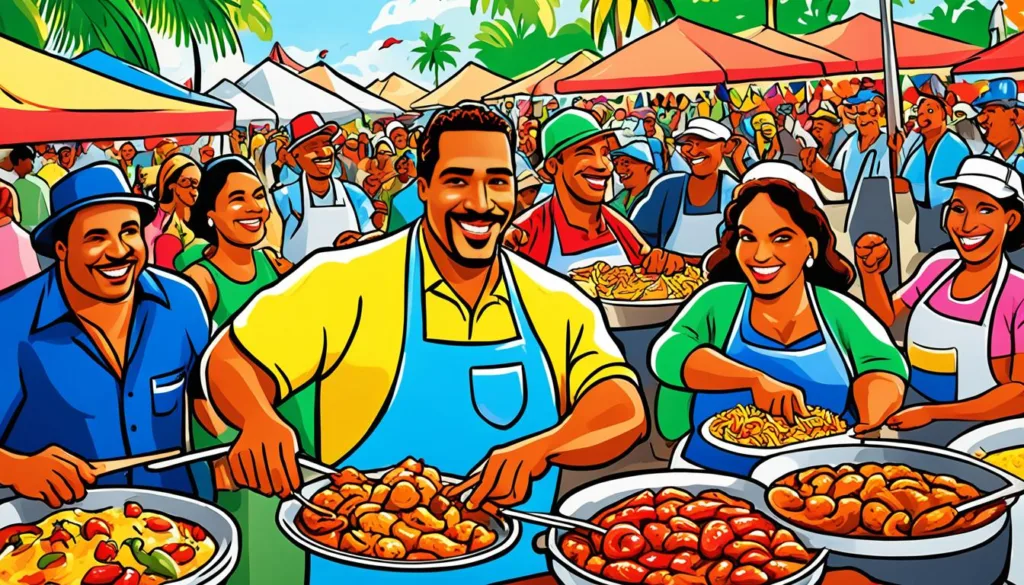
Celebrating the Harvest: Dominica’s Agricultural Festivals
Annually, the island’s agricultural festivals pay homage to the bountiful harvests, providing a platform for farmers to showcase their produce and culinary artisans to demonstrate their creativity. Markets become alive with stalls brimming with fresh fruits, vegetables, and spices that are essential to Dominican cuisine. These festivals serve not only as commercial outlets but also social gatherings that strengthen the bond between individuals and their natural environment – a true celebration of Dominican agricultural success within the larger tapestry of Caribbean festivals.
The Rise of Gourmet Dining in Dominica
With the Dominican culinary renaissance, an exquisite wave of gourmet dining has swept over the island, marking a new chapter in its rich epicurean history. The evolution of innovative cuisines has turned Dominica into a hotspot for food enthusiasts seeking a sophisticated twist on the traditional fare. This movement not only delights the palate but also plays a pivotal role in ensuring food security by emphasizing locally-sourced produce and providing an economic boost for indigenous farmers.
Renowned for its lush landscapes and vibrant culture, Dominica is now increasingly recognized for restaurants that serve up elegance on a plate. These establishments are nurturing a fine dining ecosystem that remains deeply connected to the island’s colorful flavor profile and commitment to culinary excellence.
- Local chefs are re-imaging classic Dominican dishes with a refined, contemporary spin.
- Sustainably-sourced seafood and organic ingredients are hallmarks of the new gourmet experience.
- Creative culinary techniques showcase the fusion of international flavors with Dominican traditions.
- The emphasis on farm-to-table dining reinforces the island’s spirit of food sovereignty and sustainability.
The intertwining of Dominican creativity and gourmet innovation promises an enchanting dining experience that’s both authentic to the island’s roots and inviting to global gastronomes. It’s a celebration of taste that heralds the bright future of the Dominican culinary arts.
The Influence of Global Trends on Dominica’s Food Scene
The dazzling evolution of global culinary trends has seamlessly integrated into the heart of Dominica, fostering a fusion cuisine movement that respects the soul of Caribbean tastes while inviting culinary innovation. This symphony of flavors has turned the island into a hub for a transformative Caribbean dining experience, making it a vibrant hotspot for food enthusiasts around the world.
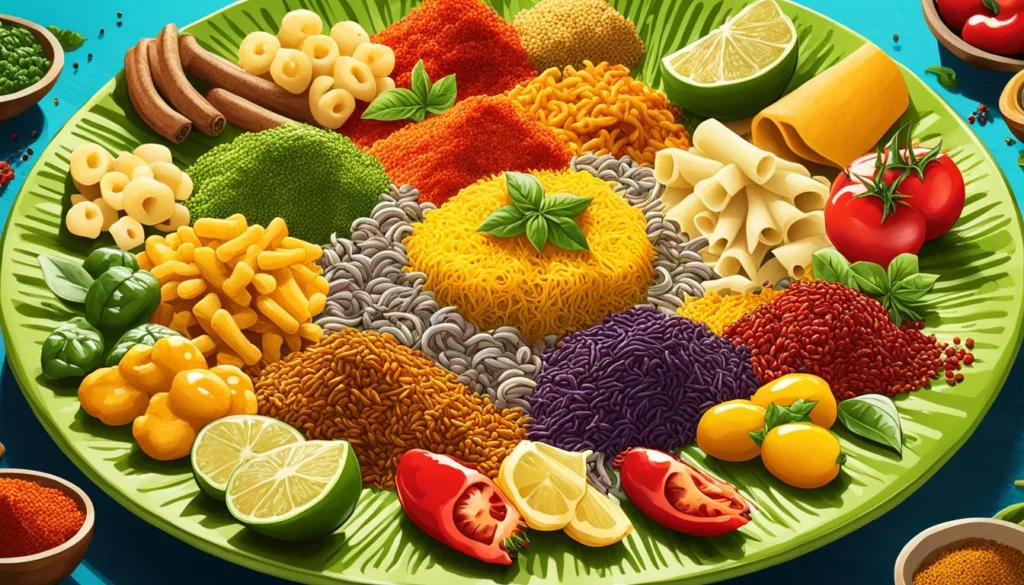
Driven by a wave of international influences, Dominica’s culinary artisans blend classic island recipes with avant-garde techniques, ushering in an era where traditional spices meet unconventional pairings. Celebrated chefs from various culinary capitals have anchored themselves in Dominica, keen to leave their mark on this rich soil fertile with culture and tradition. They conjure up spectacular dishes that tell a tale of Dominica, yet whisper of places distant.
As the global spotlight shines upon Dominica’s food scene, natives and visitors alike rejoice in the diversity of dining options. Menus that once spoke in familiar tones now entice with exotic accents, narrating the island’s bold venture into the world of contemporary cuisine. In this transformative time, Dominica stands as a testament to the enchanting possibilities that arise when the world comes together at the table.
- Creative Caribbean Fusion – Traditional dishes acutely infused with global flavors
- Innovative Cooking Practices – A blend of ancestral techniques and modern gastronomy
- International Gastronomic Influence – Chefs from various cultures contributing to a shared culinary identity
- Elevating the Local Palate – A quest for refining taste while preserving authenticity
The success of Dominica’s culinary diversification underscores the universal nature of good food—it is a language spoken fluently by many, lovingly understood by all. The island’s food scene, once a hidden gem, now sparkles brightly on the world stage, promising an unforgettable Caribbean dining experience where each bite is a voyage, and every dish is a destination.
Dominican Cuisine Journey: Embracing Local and Global Flavors
The essence of the Dominican culinary heritage lies in its power to fuse vibrant flavors from across the globe with its comforting native dishes. As we delve into the world of Dominican cuisine, what stands out is an impressive ability to adapt and celebrate both the traditional and the eclectic tastes brought about by international influence.
Dominican cuisine, rich in its variety and flavors, is a testament to the island’s bountiful resources and its cultural openness. Traditional recipes passed down through generations stand alongside modern gastronomic innovations, presenting a tantalizing tableau of choices for any food enthusiast. From the ground root spice blends inherent in Dominican dishes, to the aromatic infusions brought in by international chefs, the food scene is a vibrant canvas of tastes.
Whether it’s the signature savoriness of a Dominican stew or the exotic zest of a dish with international flair, every bite is a step further into an all-encompassing food journey.
| Traditional Dominican Dish | Modern Twist / Global Influence |
|---|---|
| Sancocho | Sancocho with Asian Spices |
| Mofongo | Mofongo Truffle with Garlic |
| Pescado con Coco | Pescado con Coco with Lime Cilantro Drizzle |
| Pollo Guisado | Pollo Guisado with North African Seasoning |
The graciously blended culinary heritage and international influence extend beyond the dishes themselves to embody the atmosphere in which they’re enjoyed. Modern Dominican restaurants imbue a cosmopolitan vibe while staying true to the warm and welcoming nature of traditional eateries, creating spaces where cultural barriers dissolve over plates of delectable food.
- Vibrant flavors infusing traditional Creole cooking with global zest
- Culinary heritage honored in every ingredient selection and cooking method
- Dominican dishes offering a comforting taste of the Caribbean
- International influence opening doors to novel flavor combinations
In the Dominican Republic, every meal is an opportunity to experience a tapestry of flavors that speak to both the heart of the island and the expanding palate of the world.
Soufriere’s Cultural Melange: A Unique Dining Experience
Within the fertile embrace of Dominica’s nature island lies Soufriere, a locale where the essence of Soufriere dining is woven into a tapestry of sensory delights. Here, the convergence of historical lineage and flavorsome innovation crafts an unparalleled gastronomical narrative. Soufriere’s eateries are more than places to dine; they are havens of cultural immersion, where every meal is a testament to the traditions and contemporary rhythms of the Nature Island.
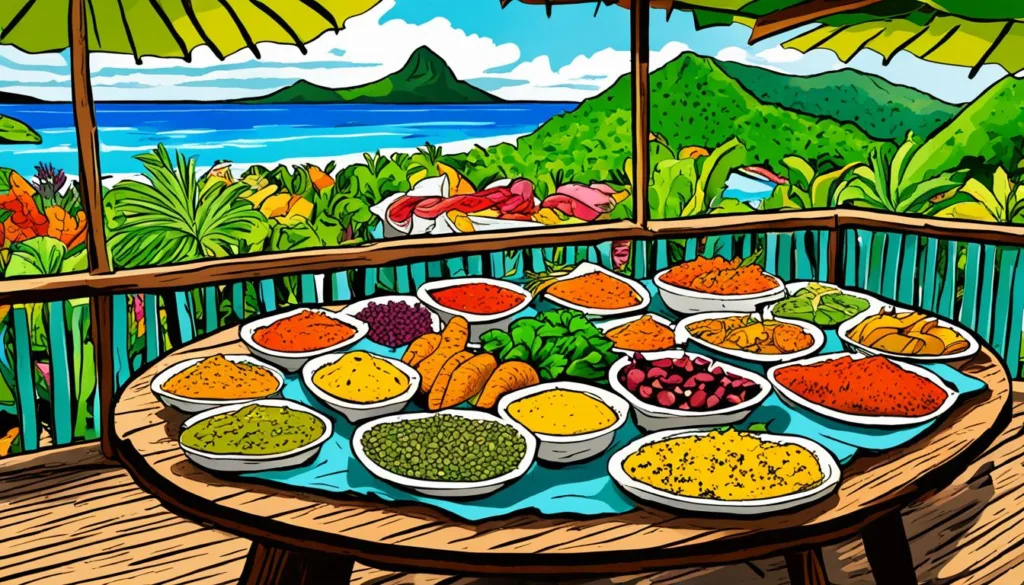
Music and Dance Expressions within the Culinary World
The pulsating beats of the Bele drum and the fluid moves of the dancers set an immersive backdrop for a dining experience that transcends the mere act of eating. Patrons partake in a revelry of senses, where the rhythm of the music complements the symphony of flavors presented in each dish of traditional Dominican foods. This harmony of the arts reflects a deep reverence for the island’s heritage, infusing every bite with the soul of Soufriere.
Merging Soufriere’s Tradition with Modern Tastes
Contemporary culinary artistry joins hands with time-honored recipes, creating a fusion where classic dishes like the spicy mountain chicken or the succulent langouste are reimagined, echoing the innovative spirit of modern nature island cuisine. Diners embark on a journey through history with each meal, savoring the traditional spices and ingredients of Dominica, thoughtfully combined with contemporary flair to enchant both locals and visitors alike.
On the Farm: The Roots of Dominican Cuisine
The heart of Dominican gastronomy beats strongly within the fertile lands where organic farming and seasonal harvests shape the pulses of everyday life. Dominican agriculture, with its deep roots in the rich history that traces back to the indigenous Kalinago people, thrives today through sustainable cultivation methods, producing an abundant variety that feeds the island nation’s culinary zeal.
As we explore the verdant landscapes, we uncover not only the source of delectable produce but also the longstanding tradition of traditional bush medicines, reflecting a heritage of natural healing and wellness deeply intertwined with the daily diet of this Caribbean paradise.
Organic Farming and Seasonal Harvests
In the Dominican context, organic farming is not just a practice but a legacy upheld by generations of farmers. Abiding by the rhythms of nature, these stewards of the land harvest a cornucopia of fruits and vegetables at the peak of their freshness, directly influencing the dynamic array of flavors featured in the local cuisine.
From Bush Medicine to Bush Tea: A Heritage of Healing
Equally important is the role of traditional bush medicines in Dominican culture. These natural remedies, derived from the island’s lush flora, signify more than mere alternative medicine—they represent a way of life, where bush teas brewed from fresh herbs serve as both daily refreshments and homemade tonics for health and vitality.
| Season | Harvest | Featured Produce | Culinary Uses | Medicinal Uses |
|---|---|---|---|---|
| Spring | Mangoes | Fresh mango, mango salad | Rich in vitamins, aids digestion | |
| Summer | Avocado | Avocado toast, salads | Healthy fats, nourishes skin | |
| Fall | Papaya | Papaya smoothie, fruit bowls | Antioxidant, improves gut health | |
| Winter | Citrus | Citrus juices, marmalades | Boosts immunity, cold prevention |
On the Ocean: Catching Fresh Seafood in Dominica
The island of Dominica is not only blessed with rich, volcanic earth—it’s also home to a sustainable fishing culture that ensures an endless supply of fresh Dominican seafood. Villages such as Layou are bastions of these age-old practices, enabling a lasting bond between the island’s vibrant marine life and its coastal culinary delights.
Marine sustainability doesn’t cease at fishing practices; it extends into the heart of Dominican cooking traditions. Seasonal seafood catches find their way into a myriad of local dishes, with each bite telling a story of the sea’s bountiful offerings.
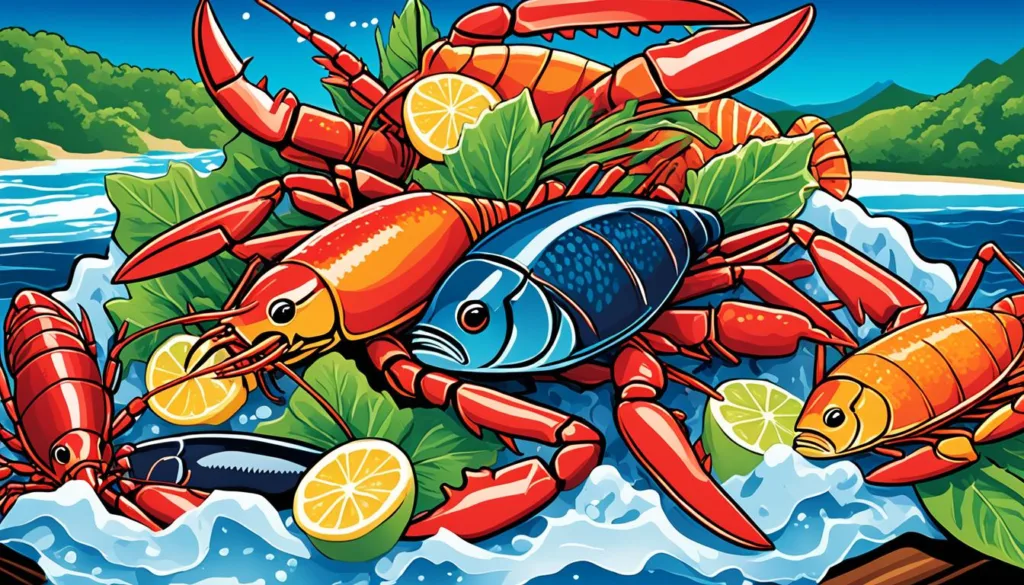
Let’s dive into some of the island’s favorite catches:
- Titiwi: These small fish are a local favorite, often transformed into flavorful spiced fritters.
- Yellowfin Tuna: Sought after for its rich taste and firm texture, ideal for both sushi and grilled preparations.
- Dorado (Mahi-Mahi): Celebrated for its sweet-flavored flesh and versatility in Dominican cuisine.
- Lobster: A prized catch that is often grilled to perfection and savored in many festive dishes.
To better appreciate the range of seafood available to Dominican kitchens, consider the following table highlighting typical catches around the island:
| Species | Season | Preparation |
|---|---|---|
| Titiwi | April – May | Fritters, Soups |
| Yellowfin Tuna | June – August | Sushi, Grilled |
| Dorado | Year-round | Sautéed, Baked |
| Lobster | March – August | Grilled, Stewed |
Dominica’s commitment to sustainable fishing ensures that future generations will continue to enjoy the plethora of seafood that graces the Dominican plate today. Through the intricate dance of traditional fishing methods and respectful harvesting, the island’s waters remain a teeming source of life and sustenance. As visitors indulge in the coastal culinary delights, they partake in a legacy that is as enduring as the ocean itself.
At the Market: A Cornucopia of Fresh Dominican Produce
Stepping into a Dominican local food market is an experience that appeals to all the senses. Picture bustling stalls adorned with an array of vibrant ground provisions, exotic fruits, and verdant vegetables. The air is infused with the promise of farm-to-table eating, celebrating the commitment to fresh Dominican produce and dietary sustainability. On the island, markets are not just places of commerce; they are cultural crossroads where the land’s generous offerings are shared with pride and joy.
The Bounty of Ground Provisions
Rich, fertile soil blesses Dominica with a wealth of ground provisions that feature heavily in local cuisines. Yams, dasheen, sweet potatoes, and plantains lay neatly arranged, inviting passersby to appreciate their earthy goodness. These staple foods have nourished generations and continue to be celebrated for their versatility and rich, comforting flavors.
From the Local Soil to the Table
The short journey from soil to plate epitomizes the farm-to-table lifestyle uniquely ingrained in Dominican culture. Visitors and locals alike are treated to produce that’s often harvested within mere miles—or even steps—from the market where it’s sold. This close-knit chain ensures that every purchase supports the local economy, environment, and healthful eating habits reflective of a true farm-to-table ethos.
| Produce | Nutritional Benefits | Culinary Uses |
|---|---|---|
| Yam | Rich in fiber, potassium, and manganese | Boiled, pounded into a fluffy dough-like consistency or roasted |
| Dasheen | Low in Saturated Fat, high in Vitamin C, Vitamin E, and Magnesium | Commonly used in soups or stews or simply boiled as a side dish |
| Sweet Potato | High in fiber, vitamins A and C, and antioxidants | Baked, mashed, or used in desserts and savory dishes |
| Plantain | Source of Vitamin A, Vitamin C, and Carbohydrates | Fried, boiled, or made into chips |
Conclusion
Embarking on a Dominican Cuisine Journey is like stepping into a vivid storybook of flavors, one that leads you through a panorama of tastes that are integral to the island’s charm. The authenticity of Dominican food culture is a powerful testament to the island’s history, blending local flavors with a culinary innovation that respects tradition while embracing the future. An authentic culinary exploration in Dominica is not merely about satisfying hunger—it’s a sensory immersion that connects you to the island’s rhythm, from its majestic rainforests to its welcoming shores.
Famed for its local flavors, Dominica presents an array of dishes that are as eclectic as they are emblematic of the Caribbean spirit. Food culture here is rooted in community and sustainability, with each meal you partake in telling a story of communal bonds, environmental reverence, and cultural continuity. Whether you’re feasting on fresh seafood beside the Caribbean Sea or enjoying a rich Creole dish surrounded by the tropical embrace of the land, the flavors of Dominica promise to leave an indelible mark on your palate and heart.
For the itinerant food lover, a visit to Dominica offers an enchanting narrative of heritage and taste, a food culture that’s deeply intertwined with the island’s lively spirit. An authentic culinary exploration in Dominica is an unforgettable sojourn, where each meal is a discovery, and every flavor is a step closer to the heart of the Nature Island. With a culinary repertoire that thrives on the island’s bountiful resources and creative zest, Dominica cordially invites you on this journey—a rich indulgence in the true essence of Caribbean life.
FAQ
What makes Dominican cuisine unique?
How important is seafood to Dominica’s cuisine?
Can you describe Dominica’s traditional Creole dishes?
What are some common cooking techniques in Dominica?
What role do food festivals play in Dominica?
How is gourmet dining influencing Dominican cuisine?
How have global trends impacted Dominican food culture?
What is the culinary experience like in Soufriere, Dominica?
How do farming practices influence Dominican cuisine?
What is the significance of the local markets in Dominica?
Source Links
- https://dominicatraveller.com/dominicas-culinary-delights-a-taste-of-the-caribbeans-best-kept-secrets
- https://discoverdominica.com/en/posts/42/a-taste-of-the-island-dominicas-delicious-culinary-experiences
- https://truenaturetravels.com/local-community/discovering-the-heart-of-dominica-a-journey-into-the-rich-culture-and-serene-natural-beauty-of-soufriere/



